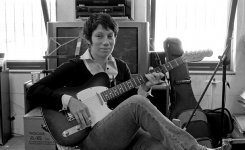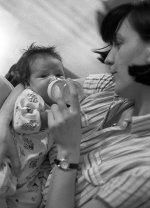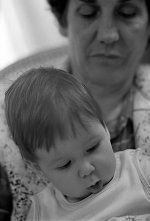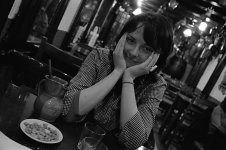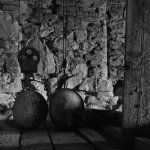photophorous
Registered User
Hi Everybody,
Info on this topic is all over the place and I'm confused, so I was hoping some of you experts could provide some suggestions. I need to find a good high speed film/developer combo to use at a wedding. It's a friend's wedding, not a paying gig, and I'm only doing this to add something different to what the "real photographer" will be providing. Still, I want to do my best. I'll be doing mostly candid shots in low light, on 35mm.
I've developed a lot of slower film in D76, but I have very little experience shooting high speed films. I have tried one roll of Neopan 1600 in D76 and one roll of TriX at 1250 in Diafine. I didn't like the look of the TriX/Diafine shots, but the highlight control was nice. OTOH, Neopan 1600 looked very nice, but I'm afraid I won't be able to control the contrast in bad lighting.
So, I just ordered some Delta 3200, Tmax3200, and more Neopan 1600. I want to try the Neopan at 2400 in Diafine, but I'm looking for suggestions on the other two. I only have time to try one new developer (in addition to D76 and Diafine) so I'd like one that will work with all these films. I don't think a loss of shadow detail will hurt people shots, as long as mid tones are good and grain is reasonably well controlled. Any suggestions?
Thanks for your help. I know I need to do a lot of experimenting, but I want to start off in the right direction.
Paul
Info on this topic is all over the place and I'm confused, so I was hoping some of you experts could provide some suggestions. I need to find a good high speed film/developer combo to use at a wedding. It's a friend's wedding, not a paying gig, and I'm only doing this to add something different to what the "real photographer" will be providing. Still, I want to do my best. I'll be doing mostly candid shots in low light, on 35mm.
I've developed a lot of slower film in D76, but I have very little experience shooting high speed films. I have tried one roll of Neopan 1600 in D76 and one roll of TriX at 1250 in Diafine. I didn't like the look of the TriX/Diafine shots, but the highlight control was nice. OTOH, Neopan 1600 looked very nice, but I'm afraid I won't be able to control the contrast in bad lighting.
So, I just ordered some Delta 3200, Tmax3200, and more Neopan 1600. I want to try the Neopan at 2400 in Diafine, but I'm looking for suggestions on the other two. I only have time to try one new developer (in addition to D76 and Diafine) so I'd like one that will work with all these films. I don't think a loss of shadow detail will hurt people shots, as long as mid tones are good and grain is reasonably well controlled. Any suggestions?
Thanks for your help. I know I need to do a lot of experimenting, but I want to start off in the right direction.
Paul


